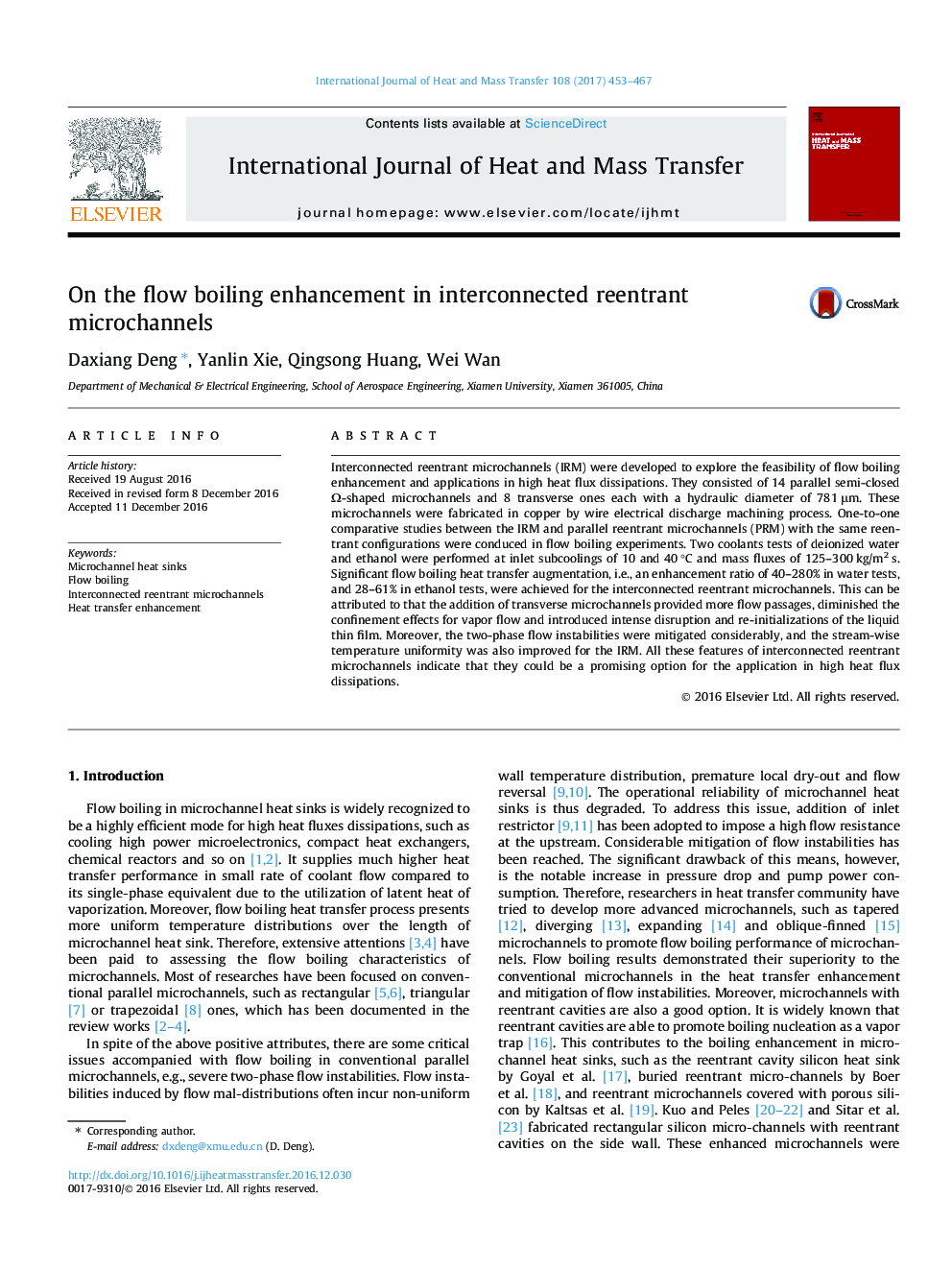| Article ID | Journal | Published Year | Pages | File Type |
|---|---|---|---|---|
| 4994291 | International Journal of Heat and Mass Transfer | 2017 | 15 Pages |
Abstract
Interconnected reentrant microchannels (IRM) were developed to explore the feasibility of flow boiling enhancement and applications in high heat flux dissipations. They consisted of 14 parallel semi-closed Ω-shaped microchannels and 8 transverse ones each with a hydraulic diameter of 781 μm. These microchannels were fabricated in copper by wire electrical discharge machining process. One-to-one comparative studies between the IRM and parallel reentrant microchannels (PRM) with the same reentrant configurations were conduced in flow boiling experiments. Two coolants tests of deionized water and ethanol were performed at inlet subcoolings of 10 and 40 °C and mass fluxes of 125-300 kg/m2 s. Significant flow boiling heat transfer augmentation, i.e., an enhancement ratio of 40-280% in water tests, and 28-61% in ethanol tests, were achieved for the interconnected reentrant microchannels. This can be attributed to that the addition of transverse microchannels provided more flow passages, diminished the confinement effects for vapor flow and introduced intense disruption and re-initializations of the liquid thin film. Moreover, the two-phase flow instabilities were mitigated considerably, and the stream-wise temperature uniformity was also improved for the IRM. All these features of interconnected reentrant microchannels indicate that they could be a promising option for the application in high heat flux dissipations.
Related Topics
Physical Sciences and Engineering
Chemical Engineering
Fluid Flow and Transfer Processes
Authors
Daxiang Deng, Yanlin Xie, Qingsong Huang, Wei Wan,
